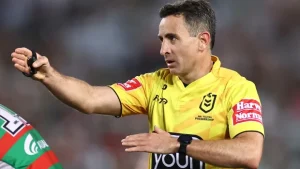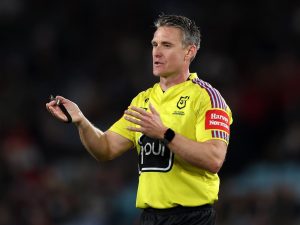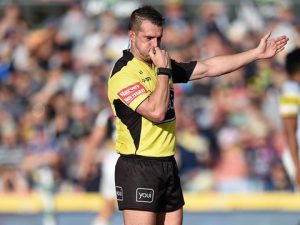The modern game of rugby league is almost unrecognisable compared to what it was even just two decades ago. The National Rugby League (NRL), in its ongoing pursuit of a faster, more entertaining product, has introduced a string of rule changes that have undeniably changed the fabric of the sport. But in their relentless drive to create spectacle, the NRL may have lost sight of a more important value — balance. It’s time we asked: should the NRL itself be sent to the sin bin?

Over the years, the NRL has turbocharged the game. The defensive line was pushed back from five metres to ten, drastically increasing the space for attacking plays but also amplifying the speed and force of contact. Then came the controversial six-again rule, designed to maintain momentum and keep the ball in play — an innovation that further drains players without the respite of a penalty or structured set. Add to that the shot clocks on drop-outs and scrums and you have a game engineered for constant movement, with minimal pause. Great for viewers? Maybe. Great for players? Not quite.
In tandem with these rule changes, athletes themselves have evolved. Today’s NRL players are bigger, faster, and more powerful than their predecessors. Combine that physical evolution with decreased interchanges and shorter recovery turnarounds between games, and you get a perfect storm of fatigue, reduced judgment, and higher risk of injury — especially to the head and neck. In short, the league has supercharged its product without adequately considering the toll it takes on its most important asset: the players.
The inevitable result? More high shots. More sin bins. And more frustration for fans who pay their money, don their team colours, and invest emotionally in contests that are regularly reduced to 12-on-13 or worse. A sin bin for a clumsy or accidental head-high tackle — often the result of fatigue, split-second misjudgment, or simple bad luck — can swing the momentum of a game, potentially ruining what should be a fair contest.


Let’s be clear: no one is advocating for a return to the Wild West of reckless tackles and unchecked violence. Player safety is paramount. But the current system penalises teams and supporters for incidental or unavoidable contact while doing little to prevent the incidents from happening in the first place. In this reactive environment, everyone loses.
So, what needs to change?
First, the NRL must wind back some of the changes that have created this hyper-speed version of the game. Reducing the ten-metre rule to eight or even reverting to five metres would not only reduce the ferocity of collisions but also lessen the fatigue factor. Abandoning or adjusting the six-again rule would give teams much-needed breathers, allowing for better structure and safety in defence.
Secondly, the NRL should introduce stop-clock mechanisms for genuine time-wasting moments like injuries, drop-outs, and captain’s challenges. This would allow players to recover without robbing fans of their 80 minutes of action.
Thirdly, the league needs to differentiate between reckless and accidental contact. Not all head-highs are created equal. Clear guidelines and greater nuance in officiating could allow referees to apply common sense — issuing penalties or warnings without resorting to the sin bin for every head clash or mistimed tackle.
Finally, the NRL must expand the interchange bench to include designated concussion substitutes. If a player is ruled out due to a Head Injury Assessment (HIA), another player should be allowed to take their place — not at the expense of the team’s interchange tally. This protects the injured player while maintaining the integrity of the game.

The NRL has always prided itself on being a leader in innovation and safety. But leadership isn’t just about being first — it’s about being wise. Right now, the league’s reactive approach to head contact is failing both players and fans. It’s time to hit pause, reassess the direction of the game, and take proactive steps toward a safer, fairer, and more balanced competition.
Because if any entity deserves ten in the bin for creating chaos and confusion, it’s not the players — it’s the NRL itself.
What do you think? What changes should the NRL make to improve player safety and game fairness? Have your say on the latest poll
Fans Have Your Say – Download the app from the App Store or Google Play Store.